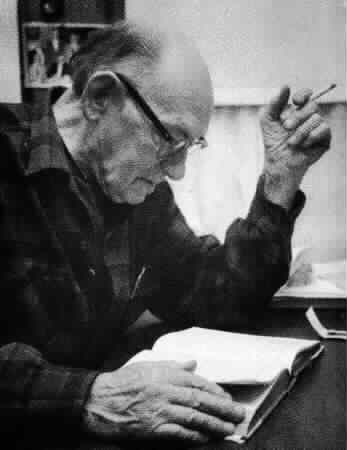Tobacco
Today, we find out what Montezuma's revenge really was. The University of Houston's College of Engineering presents this series about the machines that make our civilization run, and the people whose ingenuity created them.
Columbus brought two kinds of trouble back from the New World. One was gold with all the mischief that went with it. The other was tobacco.
Renaissance botanists and herbalists were immediately taken by tobacco. The American Indians had used it sparingly and ceremonially. That, in itself, gave this new plant an aura of importance.
By 1597, botanist John Gerard wrote that tobacco induced visions. He also said it cured kidney pain, gout, toothache, worms, ague, ulcers, scabies, burns, and gunshot wounds. It was a snake-bite antidote and its oil cured deafness. Gerard objected to smoking the stuff, and he apparently realized it was addictive.
By the late 1500s, tobacco had addicted Europe, and playwright Ben Jonson wrote, "[Tobacco] is good for nothing but to choke a man." Robert Burton was more vehement: "'Tis a plague, a mischief ... damned tobacco, the ruin of ... body and soul."
On the other hand, the best known work of Elizabethan poet John Beaumont was his Metamorphosis of Tobacco. Beaumont said that tobacco heals quarrels and makes you lucky in love.
Tobacco-growing was the first industry in the Americas. By the 1600s Europeans took up slavery: first to grow tobacco, then to provide another dangerous New-World product, sugar.
For the next 400 years, literature both sainted and demonized tobacco. The smoke, you might say, began clearing in the 19th century. By then tobacco's lethal power was clear enough to anyone who'd admit it. Essayist Charles Lamb struggled to rid himself of the stuff. He wrote to Wordsworth in 1805, "[I must] leave off Tobacco. ... [I think] it does not agree with me." Nine years later he wrote another friend, "This very night I am going to leave off tobacco! Surely there must be some other world in which this unconquerable purpose shall be realized."
The first modern medical study of tobacco's effects came out of a hospital in France in 1859. It showed that, of 68 patients who'd developed cancer of the lips, every one used tobacco. But it was 1954 before the American Cancer Society and the British Medical Research Council both wrote wide-ranging reports that began showing just how murderous tobacco really is.
Today our taxes support tobacco and the health costs it heaps on us. We laughed when newspapers showed ten tobacco executives raising their right hands to swear they believed tobacco is non-addictive. Meanwhile, Montezuma has had his revenge. European colonists killed off twenty million Native Americans or more -- chiefly by bringing in smallpox, flu, and measles. That's a terrible number. But, by now, tobacco has killed far more than that, and the deaths go on -- hardly dented by what science, or experience, tells us.
I'm John Lienhard, at the University of Houston, where we're interested in the way inventive minds work.
(Theme music)
Grafton, A., New Worlds, Ancient Texts: The Power of Tradition and the Shock of Discovery. Cambridge, MA: The Belknap Press of Harvard University Press, 1992.
See also Episodes 1182 and 1194, and the Encyclopaedia Britannica article on tobacco.

"If the Camels don't get you, the Fatimas will."
(an old song my father used to sing to me)
Photo by James Lienhard